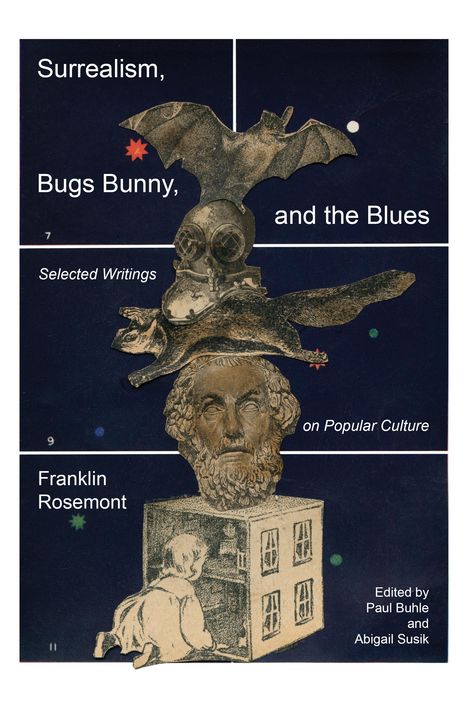Franklin Rosemont: Surrealism, Bugs Bunny, and the Blues, Kartoniert / Broschiert
Surrealism, Bugs Bunny, and the Blues
- Selected Writings on Popular Culture
(soweit verfügbar beim Lieferanten)
- Herausgeber:
- Abigail Susik, Paul Buhle
- Verlag:
- PM Press, 02/2025
- Einband:
- Kartoniert / Broschiert
- Sprache:
- Englisch
- ISBN-13:
- 9798887440866
- Artikelnummer:
- 11963701
- Umfang:
- 368 Seiten
- Gewicht:
- 408 g
- Maße:
- 226 x 152 mm
- Stärke:
- 30 mm
- Erscheinungstermin:
- 11.2.2025
- Hinweis
-
Achtung: Artikel ist nicht in deutscher Sprache!
Klappentext
Rediscover the most insightful and incendiary cultural commentaries from a leading figure in the revival of Surrealism.
Surrealism, Bugs Bunny, and the Blues is a collection of Franklin Rosemont's writings on popular culture over a period of more than forty years. Rosemont, a self-taught scholar, poet, and artist, playfully uncovers the sometimes hidden-in-plain-sight writers and artists who managed to be both popular, vernacular, and in their own ways profoundly revolutionary.
Rosemont skillfully weaves together what most would regard as unlikely threads. The labor culture of the nineteenth-century anarchist movement gains new meaning when connected to the famed Chicago musicians of blues and jazz. His interests from childhood extended from his favorite animators and comic art---Mel Blanc and Tex Avery, Scrooge McDuck, Mighty Mouse, Krazy Kat, Smokey Stover, and Powerhouse Pepper---to nineteenth-century drug-taker Benjamin Paul Blood, or the barely remembered best-selling utopian writer Edward Bellamy. Palindromes and other wordplay counted along with radical environmentalism, modern dance alongside the "mad" self-taught writer-artist Henry Darger.
Find all these and much more, exploring the inventory of Franklin Rosemont's discoveries and his luminous, unpredictable exploration of himself. An introductory essay by Abigail Susik and an afterword by Paul Buhle frame his work and life.


